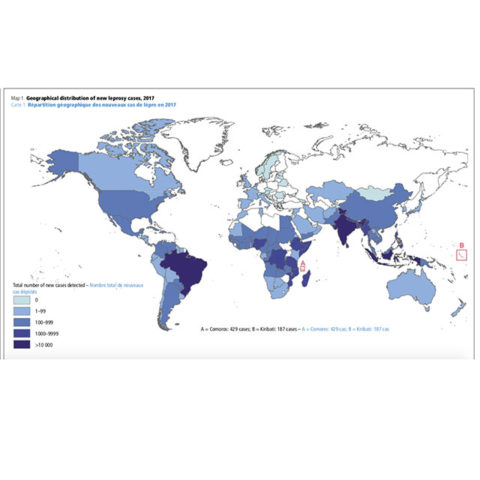
Global leprosy statistics show slight decrease in reported cases
WHO data: 210,671 new leprosy cases reported in 2017
At the end of August, the World Health Organisation published its annual statistics on world leprosy. These provide data about the current state of leprosy from 150 countries – more than ever before.
The data tells us that global leprosy case detection increased slightly in 2017 in all regions other than South East Asia – due probably to more complete reporting. Worldwide, 210,671 new leprosy cases were reported, down 2% from 2016.
Two of the key targets in WHO’s global leprosy strategy relate to the number of patients with Grade 2 Disability (G2D) at the time of diagnosis. A reduction in G2D can show the effect of interventions to find cases early. One of these targets is to have zero new child cases with G2D. A total of 238 child cases were reported, but this seems to be under-reported as data is lacking from some countries. The other target is to reduce the G2D rate in new cases to below 1 case per million population. This figure went down from 2.5 per million in 2015 to 1.8 in 2016 and 1.6 in 2017, having previously been very static at around 2.5 per million. It is difficult to call this a significant trend yet – almost all the reduction occurred in India and Indonesia – but we will watch with interest.
Reports of routine testing for drug resistance were presented for the first time: 1,058 patients were tested and there were 18 cases of rifampicin resistance. Leprosy reactions were also reported for the first time: 7,332 cases of Type 1 reactions and 5,370 Type 2 reactions. The only further detail given is the regional breakdown of cases. The regional breakdown suggests that there may be both under-diagnosis and under-reporting of reactions, especially in Africa.
The existence of discriminatory laws and instances of discriminatory practices were also reported for the first time. It is likely that this data is severely under-reported, possibly because systems were not yet in place to collect this sort of information. We hope for more comprehensive data next year.